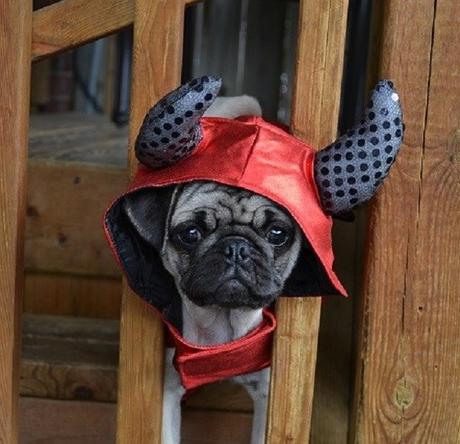Hell is almost a part of every religion in the world known as the place where all the damned souls end up. It is actually possible to argue that hell makes up the other half of every faith. You know, that half that every believer tries to avoid. Whether you are a person of faith or not, you can't help but scare at the idea of finding yourself in hell. However, after reading this list, you will realize that some hells are more dangerous than others. Some hells in some traditional religions are actually better than some versions of heaven somewhere else!

Helheim
Vikings had a very interesting heaven called Valhalla, also known as the Halls of Asgard or the kingdom of Odin. The Viking heaven was only for those who died in combat; the rest had a rather grim fate in hell called Helheim. The problem with Helheim is that you didn't even have to do bad deeds to end up there. Those who died of old age, deserters, the sick, and the weak all went there. Helheim is ruled by the ruthless goddess Hel, the daughter of Floki, the tricky god.
The whole place is surrounded by the great roaring river Gjoll, which prevents those who end up here from escaping. The gates of Helheim are then guarded by the mad flesh-eating monsters Modgud and the cannibal dog Garm. If you died of worse crimes in Viking books such as breaking an oath, then you were taken to a colder section of Helheim known as Nifleheim, where the powerful eagles blow their wings without stopping to keep the place frozen.

Gehenna
This is the version of hell known to Abrahamic religions where evildoers will be thrown into a bottomless pit and be eaten by flames. The term is believed to have originated from a place that exists in the South-Eastern part of Jerusalem, known as Gehinnom. It is believed that human beings were offered as burnt sacrifices in the valley to god Moloch of the Amorites, and that screams of dying people filled the air.
It seems to have painted the idea that God will do the same to all people that don't obey his rules, except his version will be a bottomless pit filled with fire and brimstone rather than an open valley. It is not clear if it will be a punishment or just annihilation, but the point seems to be inflicting as much suffering on errant souls as possible. Gehenna has also inspired other versions of hell we will discuss below.

Avichi
If you are a Buddhist, you know that punishment is by karma, and the weight of suffering depends on how evil your deeds are. Avichi is the seventh of the seven hells, which has the worst suffering. Some levels have a level of gruesomeness too graphic to describe in this article. The easiest level is the first one where the wrongdoers fight and rip each other's flesh off until their skeletons are seen.
The second and third levels include being beaten with hot iron bars by ferocious guards who may end up forcing you to drink molten iron or copper if you were too evil. The final state always has your body ground to paste, but that is actually a relief because the pain that precedes it is unbearable. The eviler you were, the tougher the hell you will end up in. Punishment persists until a soul has fully atoned for all its crimes.

Irkalla
Hell for the Mesopotamians (Babylonians) had nothing to do with being a good or an evil person; all the dead went there. The Babylonians believed that a man dies in seven stages, and during those seven, your spirit would be dragged through seven gates by a demon. After the seventh gate, the dead would meet the goddess Ereshkigal who ruled hell alongside Nergel, her husband, who was also the god of death.
When in hell, you would be stripped of all fame and tittles and be dressed in feathers and rags. Those in hell were all equal, and they all ate dust. The hell was also guarded by hideous beasts, including the demon Lamashtu, that feasts on babies. Their hell was not really correctional since those that went there were doomed to live there forever.

Duat
Ancient Egypt was one of the most advanced civilizations on Earth for several millennia, and their hell seems to have been more economic than spiritual. Dying in Ancient Egypt was a really tough job for both the dead and the living. They believed that a soul splits into two when a person dies. One half goes to negotiate passage to paradise while the other half remains in the body. Now, the living had to ensure that the body was properly mummified so it would stay in good shape to reunite with the other half. The half that went to seek paradise was forced to cross 12 different gates fighting with tricky and unscrupulous gods before reaching the gate of Osiris, the god of the dead who would then judge it.
The judgment was done by weighing the soul against the feather, and if you had many evil deeds, the feather would outweigh your soul. After the judgment, Osiris had to confirm that you did not commit any of the 42 worst sins. Well, the story is long, but the bottom line was escaping the wrath of these gods to avoid being sent to oblivion then come back to your body before it rots to join it into paradise. The gods toyed with people's fates and they could simply gamble with each other and send you into oblivion even if you passed Osiris' judgment, so the Egyptian paradise wasn't an easy place to end up.

The House Of Lies
Zoroastrianism is one of the oldest religions on Earth and also believed to have shaped Abrahamic religions. Their interpretation of hell is, however, gentler than most religions. Some believe that dead souls only go to a place called the house of lies where they are tested, and if they don't pass, they come back to Earth. Most of them, however, believe that when you die, your soul roams the Earth for three days before descending into the house of lies.
In the house of lies, you will meet a lady whose appearance will be a direct reflection of your actions while you were alive. To the evildoers, the lady will appear ugly and smell horrible while she drags your soul to Achista Ahu to be burnt in fire and brimstone. To the good, she will appear beautiful and gentle and carry your soul to Vasishta Ahu (heaven).

Kasyrgan
In ancient Mongolia, every person was supposed to ensure they have done more good deeds than bad ones. That way, the evil prince Erlik wouldn't have any power over them, so they would go straight to paradise. However, if you did more evil than good, Erlik's Kromos would drag you into his seven-layered pot of boiling tar. The seven layers in the pot represent seven hells, and your place in them depends on how evil you were.
The bottom pot, which is the hottest, is called Kasyrgan. The suffering here is periodical since you get to move to the top of the pot after some years of serving your sentence. You, however, have to be lucky so that the goblins that guard the pot don't club you back to the bottom of the pot and that the people to whom you did some good reach out from paradise and pull you out to join them.

Diyu
Diyu is a popular term for hell in most Chinese communities as it combines elements of Buddhism, other religions, and folklore. The version of hell and its punishment may vary from place to place, but they all have one thing in common; a punishment for every type of evil. If you lied to people, your tongue would be ripped out or your mouth burnt and sealed forever. Other crimes would be punished by being ground between rolling blades into minced meat.
You can also be boiled in molten iron like in Avichi. Punishment here is also not permanent as it only prepares you for your reincarnation. When the punishment deserving for your evils is complete, you are revived then reborn in the hope that you will live a better life than the one you lived in your past life.

Mictlan
This was the hell of the ancient Aztecs and also the only one worse than Duat. When the Aztecs died, they were cremated alongside a dog on whose back they would ride across nine rivers to reach Mictlantecuhtli, the god and goddess of death. The Journey across the nine rivers was a scary one, and you had to hope that your loved ones got you the right dog to ride on and not a chihuahua.
You had to go past bloodthirsty demons that would eat you in an instant. Your dog also had to jump and swim past the bloody rivers, running hills and scary mountains that could squeeze you into a paste. The destination wasn't as glorious as you may think though, the god and goddess of death simply ate your flesh and drank your blood from a skull.

Tartarus
The Greeks believed that all people that died went to hades, or simply the place of the dead. There was no mention of suffering and retribution in hades. The evildoers, however, went to Tartarus where the real interesting stuff happened. The judgment was delivered by Rhadamanthus, the son of Zeus, and when he deems you too evil, you were placed deeper in the pit, close to the titans that rebelled against his father.
The entrance is guarded full time by a nine-headed monster. Inside the pit, there is a river of fire named Phlegethon that burns nonstop. You are then shackled in the pit to be tormented by flesh-eating beasts and whips from the ruthless god Tisiphone (the punisher that never sleeps). It is not clear whether the punishment was temporary or if things got better with time.

